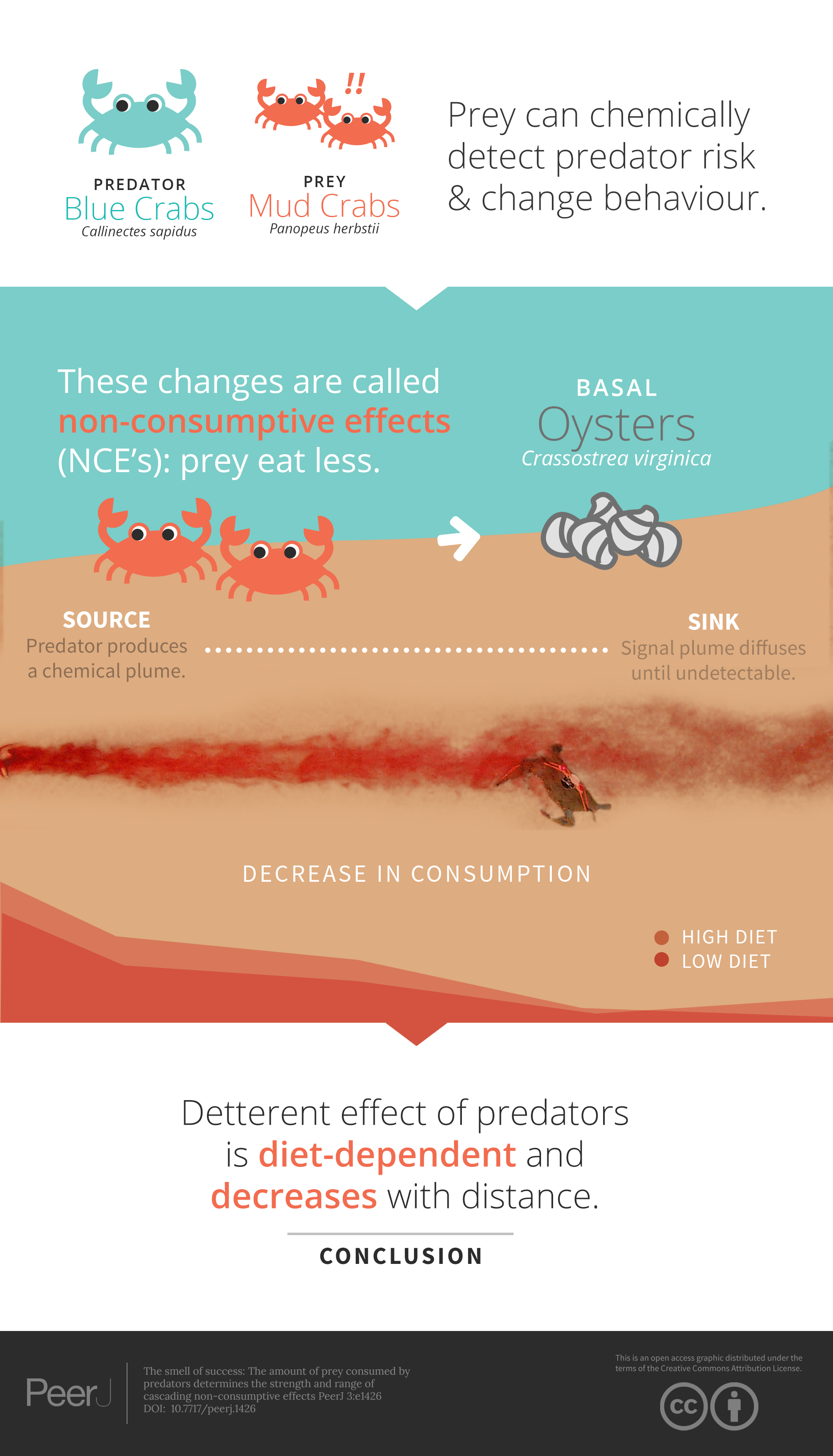LAY SUMMARY
Predators can affect prey behavior through chemical cues based on predator diets: the more a predator consumes, the less the prey will eat within certain ranges from the predator. These effects are called non-consumptive effects (NCE’s). This study determined that NCE’s are both diet and distance dependent.
ABSTRACT
We examined whether chemically mediated risk perception by prey and the effects of changes in prey behavior on basal resources vary as a function of the amount of prey biomass consumed by the predator. We studied these issues using a tritrophic system composed of blue crabs, Callinectes sapidus (top predator), mud crabs Panopeus herbstii (intermediate prey), and oysters Crassostrea virginica (basal resource). Working in a well characterized field environment where experiments preserve natural patterns of water flow, we found that biomass consumed by a predator determines the range, intensity and nature of prey aversive responses. Predators that consume large amounts of prey flesh more strongly diminish consumption of basal resources by prey and exert effects over a larger range (in space and time) compared to predators that have eaten less. Less well-fed predators produce weaker effects, with the consequence that behaviorally mediated cascades preferentially occur in refuge habitats. Well-fed predators affected prey behavior and increased basal resources up to distances of 1–1.5 m, whereas predators fed restricted diet evoked changes in prey only when they were extremely close, typically 50 cm or less. Thus, consumptive and non-consumptive effects may be coupled; predators that have a greater degree of predatory success will affect prey traits more strongly and non-consumptive and consumptive effects may fluctuate in tandem, with some lag. Moreover, differences among predators in their degree of prey capture will create spatial and temporal variance in risk cue availability in the absence of underlying environmental effects.
CITATION
(2015) The smell of success: the amount of prey consumed by predators determines the strength and range of cascading non-consumptive effects. PeerJ 3:e1426 https://doi.org/10.7717/peerj.1426
